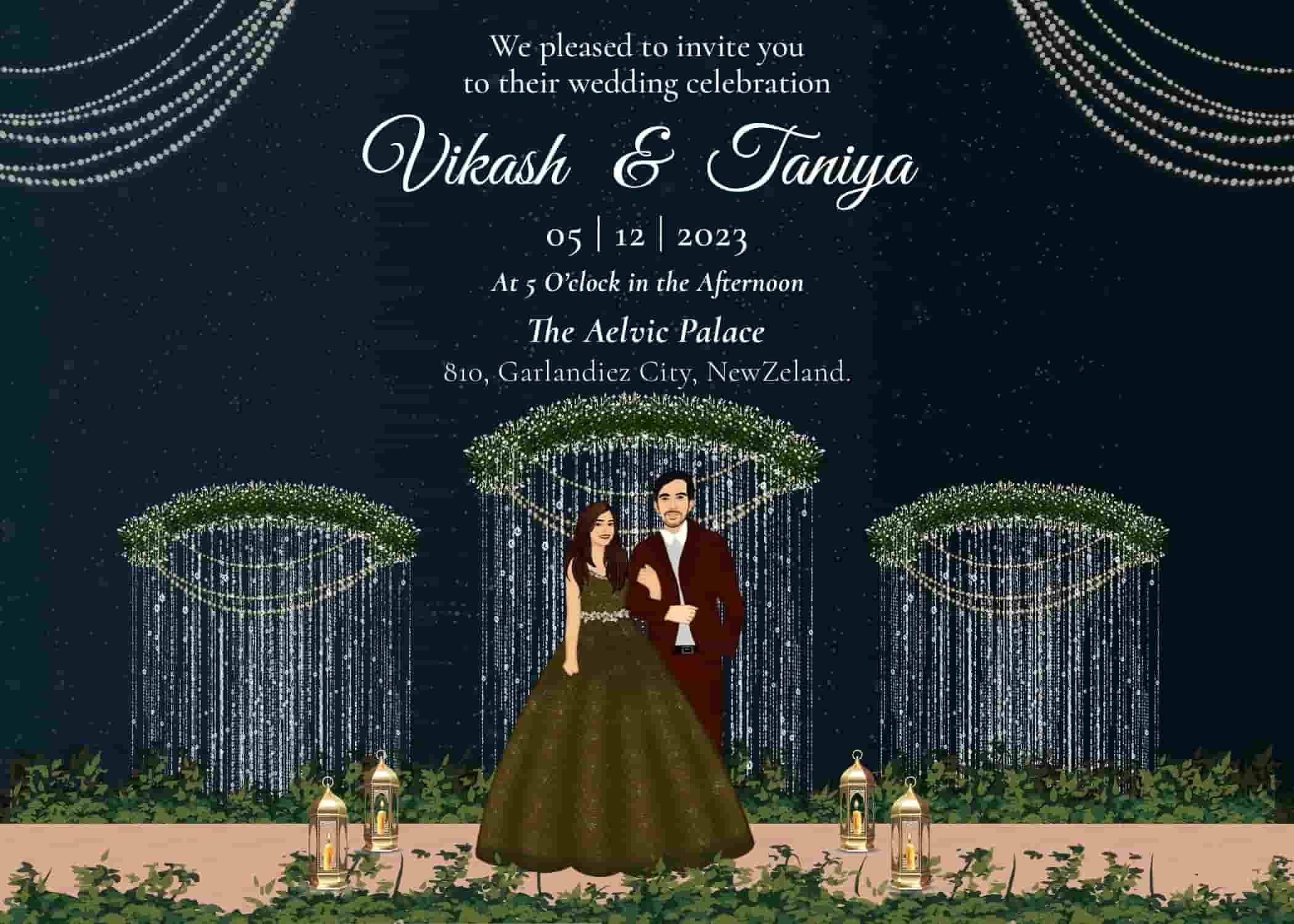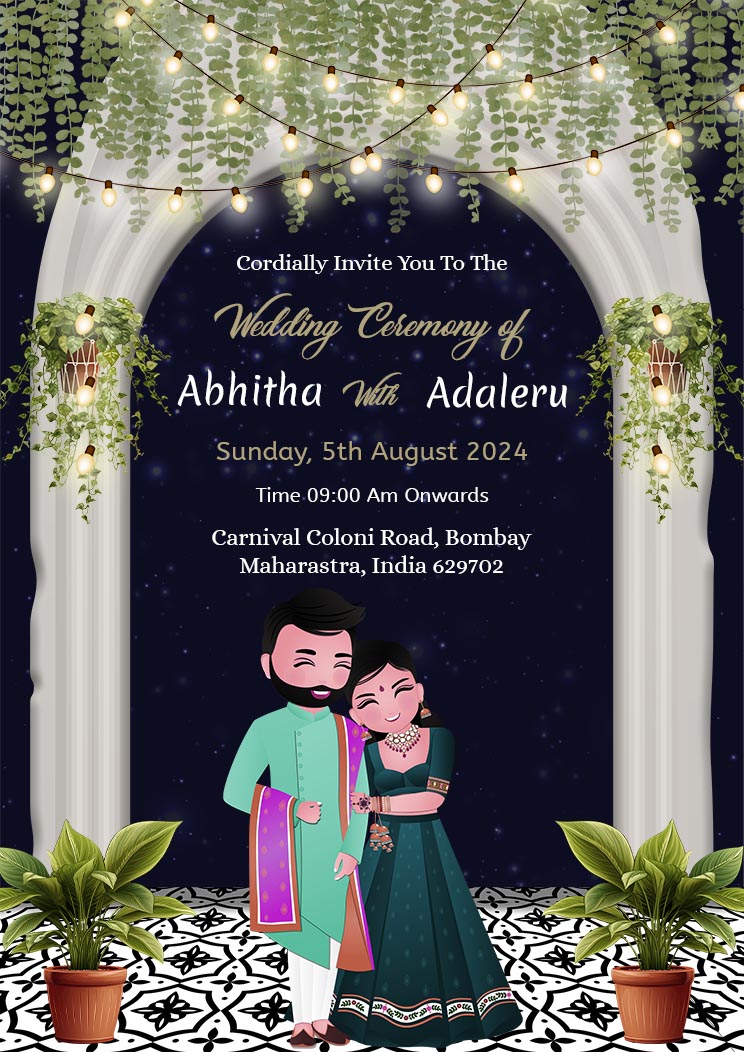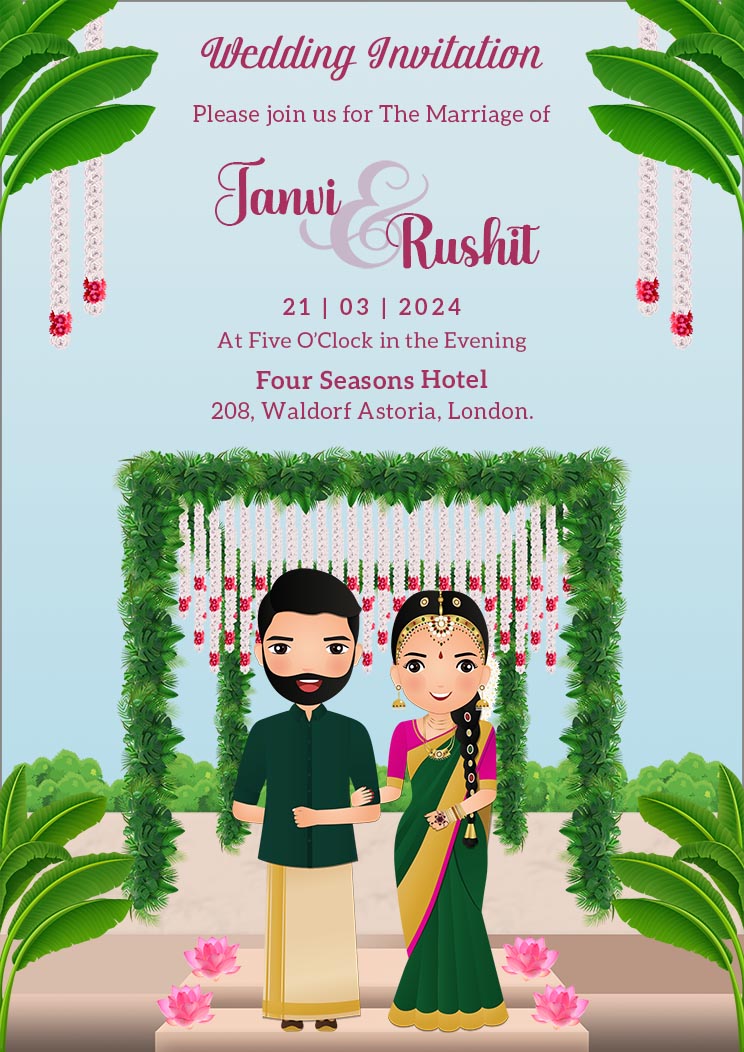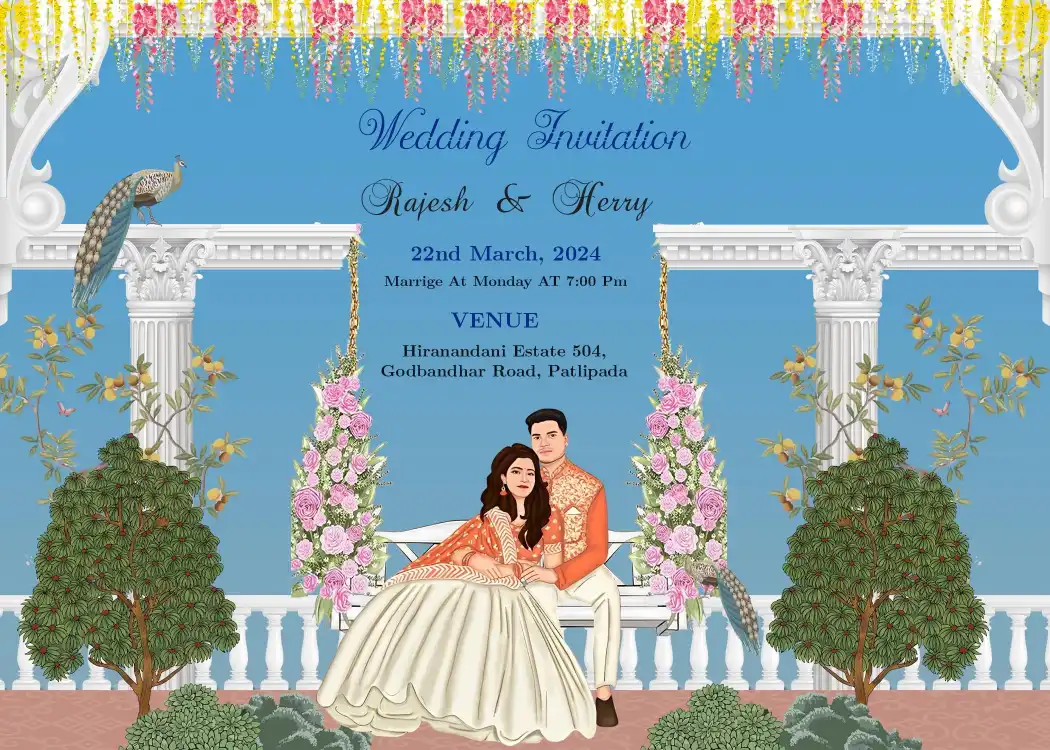Indian weddings are renowned worldwide for their grandeur, rich traditions, and vibrant celebrations. At the heart of these magnificent affairs lies the humble yet significant Indian wedding invitation card. These intricate pieces of art not only serve the practical purpose of conveying information about the wedding but also encapsulate the essence of the event itself. In this blog, we will embark on a journey through the fascinating world of Indian wedding invitation card design, exploring the history, cultural significance, evolving trends, and the artisans who craft these beautiful keepsakes.
A Glimpse into History
Indian wedding invitation card designs have a history as colorful and diverse as the nation itself. Their origins can be traced back to ancient India, where they were initially used to announce the union of two families. These early invitations were simple, handwritten scrolls adorned with auspicious symbols and blessings.
Over time, as Indian society evolved, so did the design and style of these cards. During the Mughal era, for instance, invitations were transformed into intricate pieces of art, featuring ornate calligraphy, delicate illustrations, and often, the use of gold leaf. This period marked the beginning of the intricate and artistic approach that defines Indian wedding invitation card design to this day.
Cultural Significance
Indian wedding invitation cards are more than just pieces of paper; they are cultural symbols that carry profound significance. They serve as a reflection of the couple’s heritage, values, and the unique traditions they follow. Here are a few cultural elements that are commonly incorporated into Indian wedding invitation card designs:
- Religious Symbols: Depending on the faith of the couple, the invitation card may feature symbols like Om, Swastika, or the Holy Cross, representing spirituality and the blessings of the divine.
- Colors: Different regions and communities in India have specific color preferences for wedding invitation cards. For example, red is often associated with love and passion in Hindu weddings, while green signifies fertility in Muslim ceremonies.
- Motifs: Traditional motifs like peacocks, elephants, lotus flowers, and paisley designs are frequently used to add a touch of tradition and elegance to the cards.
- Sanskrit Verses: Invitations often feature verses or shlokas from ancient texts like the Vedas or Quran, bestowing blessings upon the couple.
- Personalization: Many couples choose to include personalized elements, such as their names written in a stylized font, to make the invitation unique and memorable.
Modern Trends in Indian Wedding Invitation Card Design
In recent years, the Indian wedding invitation card design has undergone a significant transformation. While traditional elements are still cherished, modern couples are experimenting with innovative ideas to make their wedding invitations stand out. Here are some contemporary trends:
- Minimalism: Clean and minimalistic designs with a focus on typography and subtle color palettes have gained popularity among couples seeking an elegant and understated look.
- Digital Invitations: With the advent of technology, digital wedding invitations have become trendy. These eco-friendly options allow couples to share multimedia content like videos and animations, adding a dynamic touch to their invites.
- Illustrations and Watercolors: Hand-drawn illustrations, watercolor paintings, and custom artwork are being used to infuse a personal touch into invitation designs.
- Destination Wedding Themes: For couples hosting destination weddings, invitation cards often reflect the location’s essence, featuring beach motifs, tropical colors, or elements inspired by the chosen destination.
- Eco-Friendly Choices: As environmental consciousness grows, many couples opt for eco-friendly invitation materials like recycled paper, plantable cards embedded with seeds, or digital invites to reduce paper waste.
The Craftsmanship Behind Indian Wedding Invitation Cards
The creation of Indian wedding invitation cards is a labor-intensive process that involves skilled artisans and meticulous attention to detail.
- Designing: Talented graphic designers and artists conceptualize the invitation design, incorporating the couple’s vision and cultural elements.
- Printing: Printing techniques vary from traditional letterpress and foil stamping to modern digital printing. Each method requires precision to ensure the design’s quality and clarity.
- Embellishments: Many cards are adorned with embellishments like embossed patterns, laser-cut designs, and gemstones, enhancing their beauty.
- Calligraphy: Expert calligraphers painstakingly handwrite names, verses, and details with precision, adding a personal and artistic touch.
- Assembly: After all components are prepared, skilled artisans assemble the invitation, often including additional elements like RSVP cards and gift inserts.
Choosing the Perfect Indian Wedding Invitation Card Design
Selecting the right wedding invitation card is a significant decision for couples, as it sets the tone for their entire celebration. Here are some tips to help make this choice:
- Reflect Your Style: Choose an Indian wedding invitation card design that resonates with your personality and the theme of your wedding. Whether it’s traditional, contemporary, or a fusion of styles, let it reflect you.
- Consider Your Budget: Wedding invitations come in a wide price range. Set a budget beforehand and explore options that fit within it, including paper quality and printing techniques.
- Get Creative: Don’t be afraid to experiment with unique materials or designs that represent your love story. Remember, your wedding invitation is a canvas to express your creativity.
- Plan Ahead: Start the invitation process well in advance, as crafting intricate designs and assembling them can take time. This ensures you have ample time for revisions and corrections.
- Proofreading: Carefully proofread all the details on the invitation to avoid any errors. It’s crucial to have accurate information about the date, time, venue, and RSVP details.
Benefits of Indian Wedding Invitation Card Design
- Preservation of Tradition: The Indian wedding invitation card design serves as a medium to preserve and showcase the rich cultural traditions of India. By incorporating religious symbols, colors, and motifs, these cards help couples connect with their roots and honor their heritage.
- Personalization: Modern Indian wedding invitation cards offer a wide range of customization options. Couples can personalize every detail, from the design and colors to the content and artwork, making each invitation unique and meaningful.
- Eco-Friendly Options: With the increasing awareness of environmental concerns, many couples are opting for eco-friendly invitation materials. This includes recycled paper, plantable cards, and digital invitations, reducing the environmental impact of wedding preparations.
- Aesthetic Appeal: The intricate craftsmanship and artistic designs of Indian wedding invitation card design enhance their aesthetic appeal. These cards are not just functional but also serve as beautiful mementos that guests often cherish for years.
- Setting the Tone: The choice of wedding invitation card design sets the tone for the entire celebration. Whether it’s a grand and opulent affair or an intimate and minimalistic gathering, the invitation card gives guests a glimpse of what to expect.
- Convenience and Efficiency: Digital invitations have made the process of sending and receiving wedding invitations more convenient and efficient. They allow couples to share multimedia content, track RSVPs electronically, and save on printing and postage costs.
- Support for Artisans: The creation of Indian wedding invitation cards involves skilled artisans, from designers and calligraphers to printers and assemblers. By choosing handcrafted invitations, couples support these artisans and contribute to the preservation of traditional craftsmanship.
- Budget-Friendly Options: While there are luxurious and elaborate invitation designs available, there are also budget-friendly options. Couples can find designs that suit their financial constraints without compromising on style and elegance.
- Emotional Value: Indian wedding invitation card designs hold emotional value, as they symbolize the beginning of a lifelong journey together. Couples often keep these cards as cherished souvenirs, reminding them of the love and commitment they share.
Conclusion
Indian wedding invitation card design is an art form that beautifully captures the essence of India’s diverse cultures, traditions, and the evolving tastes of modern couples. From the simplicity of handwritten scrolls to the intricacy of laser-cut designs, these cards are not just announcements; they are cherished keepsakes that symbolize the union of two souls and the celebration of a lifetime.
FAQs:
-
- What cultural elements are commonly incorporated into these invitation card designs?
- Cultural elements often include religious symbols, specific colors, traditional motifs, Sanskrit verses, and personalization.
- What is the historical significance of Indian wedding invitation cards?
- Indian wedding invitation card designs have evolved from simple scrolls to intricate pieces of art over time, with origins dating back to ancient India.
-
- What should couples consider when choosing their wedding invitation cards?
- Couples should consider their style, budget, creativity, planning timeline, and the importance of proofreading to make the right choice when using Crafty Art.
- What are some modern trends in Indian wedding invitation card design?
- Modern trends include minimalism, digital invitations, illustrations, destination wedding themes, and eco-friendly choices.
- Who is involved in the craftsmanship behind Indian wedding invitation cards?
- Skilled artisans, graphic designers, calligraphers, and printers collaborate to create these exquisite invitations.












